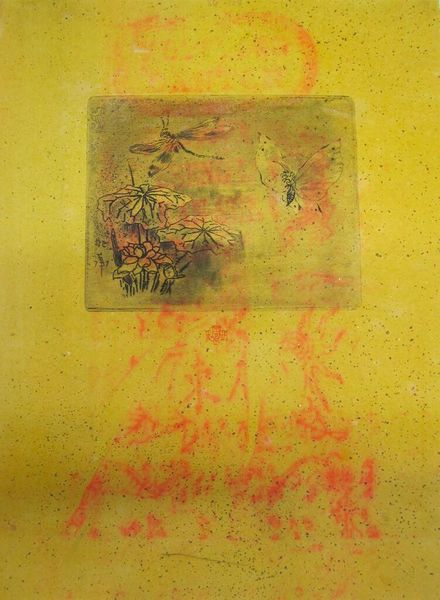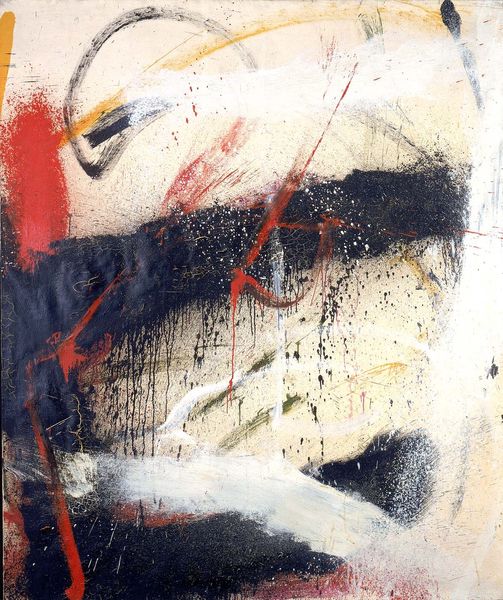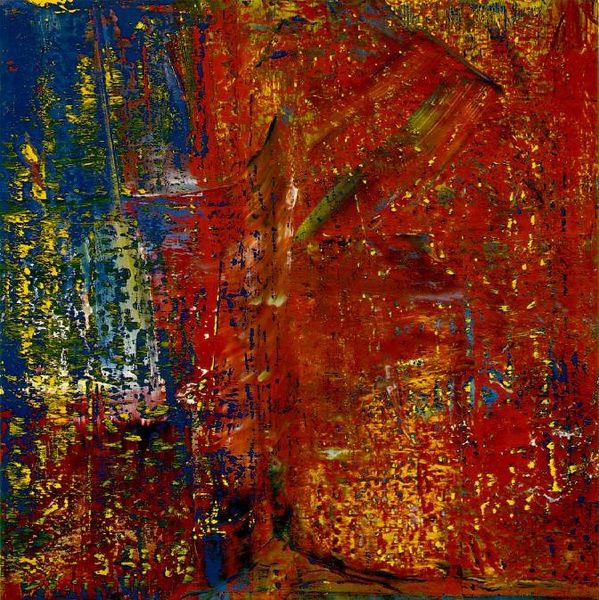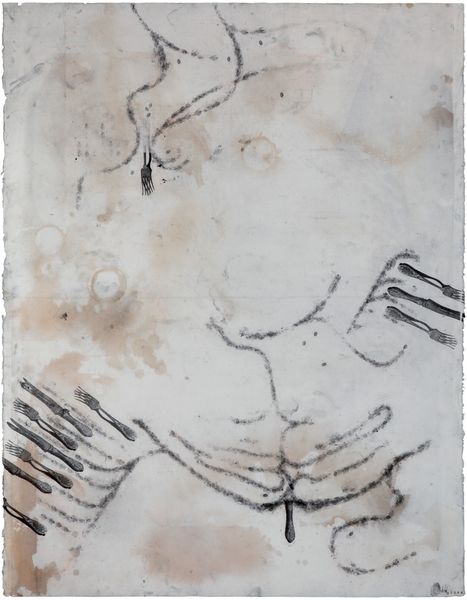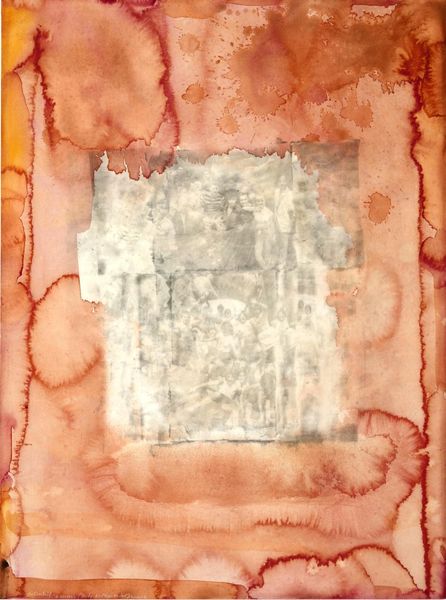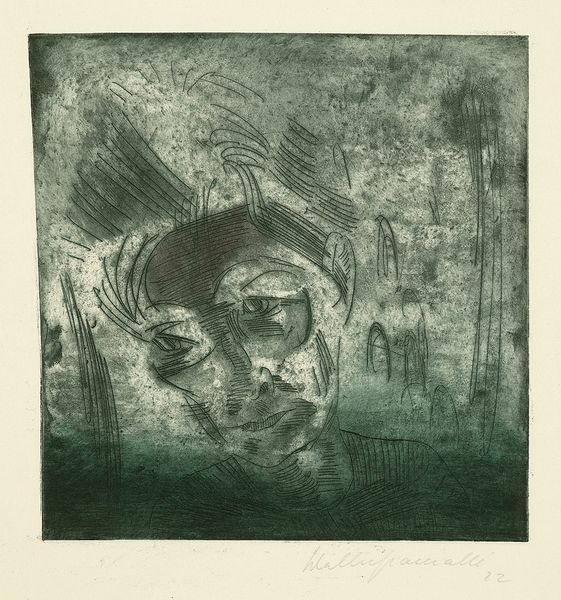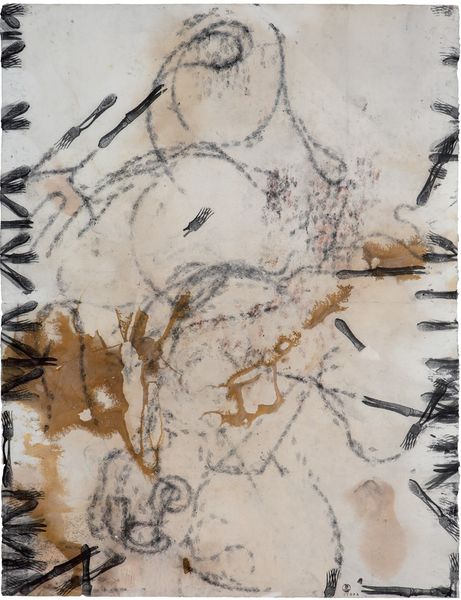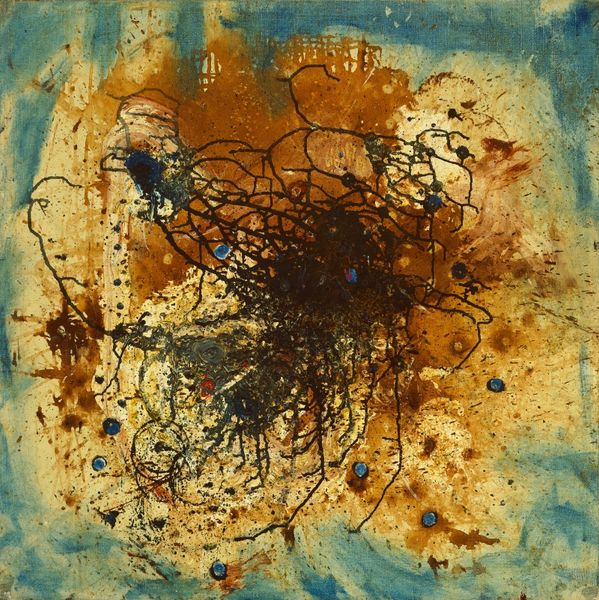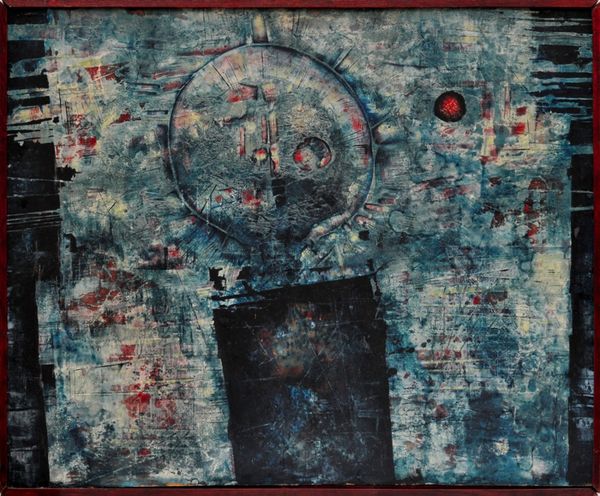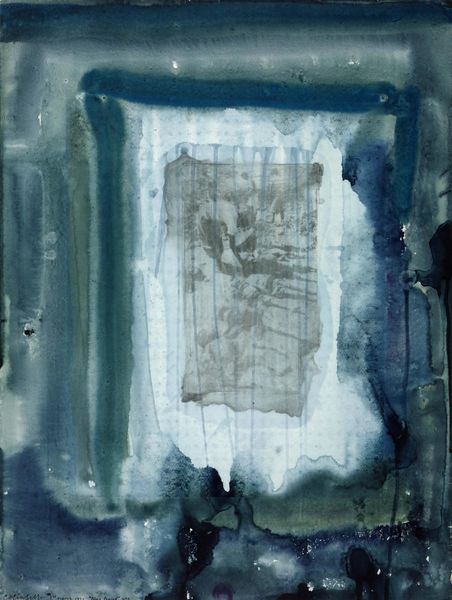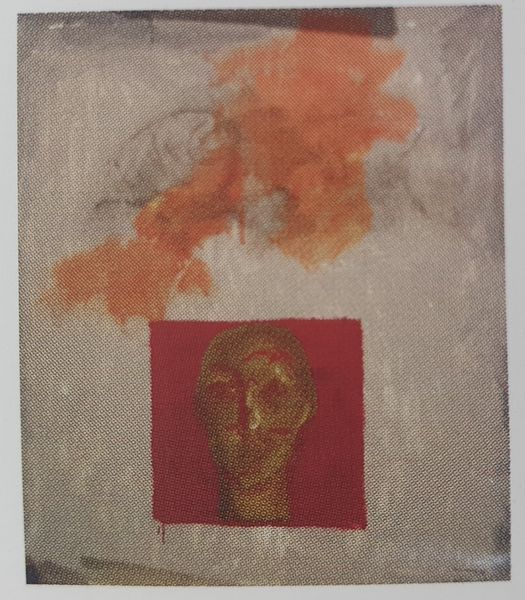
Dimensions: 40 x 60 cm
Copyright: Oleg Holosiy,Fair Use
Curator: Standing before us is "Mascaron," an intriguing piece created by Oleg Holosiy in 1990, employing both oil and acrylic paints on canvas. Editor: My initial impression is one of subdued intensity. The palette is limited, and the face seems to emerge from the depths, both haunting and familiar. There’s a feeling of something concealed or perhaps obscured by time. Curator: Indeed, I believe that interpretation aligns with Holosiy’s historical and political context. Created in the twilight of the Soviet Union, we must acknowledge the socio-political upheavals to appreciate its depths. I suspect this piece expresses suppressed voices, fractured identities of Ukraine's people at the time. Editor: I can definitely see the visual echoes of that fragmentation in the broken quality of the face. The dripping lines under the eyes are quite interesting, a powerful symbol—are they tears or the degradation of an icon? Curator: Excellent point. I think he aimed for a powerful commentary on eroding power structures, reflected in the face as the core subject, the ‘mascaron’ implying a deconstructed symbol of authority. Editor: The face itself does seem somewhat classical, reminiscent of ancient masks. This makes me think of the cultural memory embedded within us all, how old beliefs and traditions continue to affect current identities. Perhaps those 'tears' show both sorrow and a renewal after an era of imposed culture and oppression. Curator: Absolutely. It bridges the gap between past and present in very concrete ways. By invoking traditional forms, he creates a potent metaphor for societal transition. Editor: The raw, almost distressed application of paint conveys urgency. Looking at the work as a whole, it feels very personal. Holosiy appears to have channeled broader political anxieties into this visceral, individualized representation. Curator: The power of art often lies in its capacity to make visible that which is suppressed, prompting social discourse and inspiring progress. I'm left contemplating its impact then, and the effect it might still have on us today. Editor: Yes, the symbolic layering resonates far beyond its historical context. "Mascaron" invites us to delve deeper into ourselves and to recognize both the shadows and echoes within.
Comments
No comments
Be the first to comment and join the conversation on the ultimate creative platform.
